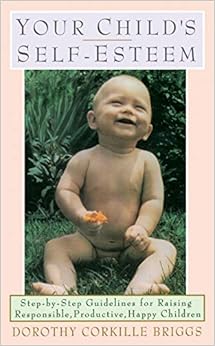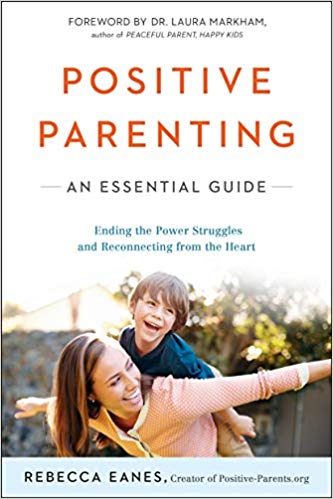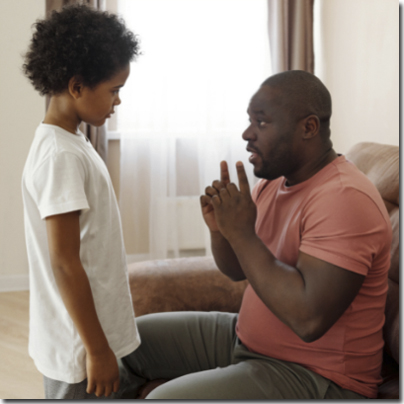 Five months into becoming parents, my husband and I had our first experience with a meltdown. As our daughter first started crying, we moved through the list of typical physical needs: is she hungry? Cold? Does she need a nappy change?
Five months into becoming parents, my husband and I had our first experience with a meltdown. As our daughter first started crying, we moved through the list of typical physical needs: is she hungry? Cold? Does she need a nappy change?
As we went through those motions, our daughter’s frustration and discomfort only increased to a complete state of emotional dysregulation. After we exhausted all normal parenting tricks, we resorted to random actions such as turning off the lights, turning on the lights, singing, rocking and bouncing. None of it worked.
We felt like there was no way we could help her, and it was gut-wrenching. I found myself wanting to cry along with my daughter. We were two new parents feeling very helpless, alone and desperate.
After an hour of screaming, our daughter was so exhausted that she fell asleep. My husband and I were also exhausted, but too strung out to sleep. As we began to research what we may have been doing wrong, we made the surprising realization that the suggestions from sources that aligned with our attachment parenting style seemed to be the complete opposite of what we had done.
But how are we to do things differently if we don’t know any different? Many of us had parents who tried their absolute best to make us ‘feel better’ during a meltdown, or perhaps even walked away and left us alone. I have some such memories myself.
I couldn’t blame myself or my husband for handling our daughter’s emotional dysregulation in the manner that we did, nor did I harbor any resentment against my parents for how they may have acted during my own childhood meltdowns. It seemed that the real issue was actually the misunderstanding of how to keep our children safe.
Emotional Dysregulation in Our Children
 Dorothy Corkville Briggs, author of Your Child’s Self-Esteem, touches on this misunderstanding when she says the following:
Dorothy Corkville Briggs, author of Your Child’s Self-Esteem, touches on this misunderstanding when she says the following:
“We usually think of safety only in the physical sense and are in the dark when psychological safety is mentioned. Yet, the cornerstone of the love that nurtures is psychological safety.”
Similarly, in his writing about school safety, Bob Ditter reminds parents and educators that children who perceive their environment as threatening or unsafe are more likely to exhibit behaviors or act out. While our children are still developing the skills of self-regulation and self-control that allows them to handle big emotions productively, they are also still developing the ability to assess safety in situations accurately.
When a child is born, their brain stem is already well developed. This allows for the basic functioning humans need to stay alive but also the ability to react quickly to perceived threats with the fight, flight or freeze responses.
It is the prefrontal cortex that allows for more complex emotions and emotional adeptness; however, this part of the brain is not fully developed at birth. It is actually suggested that the prefrontal cortex only becomes fully developed around 25 years of age!
Children use their caregivers as external regulators (kind of like an external prefrontal cortex) by using social referencing: seeking guidance from their caregivers on how to react in certain situations. Social referencing decreases the activity from the amygdala, which gives our children the mental space to assess the situation for safety and discern what an appropriate emotional reaction may be; skills which are only made possible through the prefrontal cortex.
As parents, we are responsible for our children’s physical safety as they grow into themselves, but we are also responsible for their mental and emotional safety. This does not mean that we eliminate all opportunities for our children to get upset or sad; it DOES mean we allow our children to experience the full spectrum of emotions and guide them through it with a gentle heart.
Still figuring out how to do this? Join the club! Read on to find strategies that may help turn a meltdown from something to be feared into a deeply bonding experience.
 Wondering how to keep shame from creeping in on our parenting choices? We partnered with Mercedes Samudio, licensed clinical and social worker and best-selling author, to discuss the pressure of trying to meet the parenting expectations of others and to better understand how to create a parenting manual that meets our family’s needs.
Wondering how to keep shame from creeping in on our parenting choices? We partnered with Mercedes Samudio, licensed clinical and social worker and best-selling author, to discuss the pressure of trying to meet the parenting expectations of others and to better understand how to create a parenting manual that meets our family’s needs.
This packed masterclass is one of the 60+ masterclasses you get when you join the AFineParent Academy today. Click here to learn more.
#1: Stop and Create Space
 Take a few deep breaths. It’s quite normal to feel uncomfortable and emotional at witnessing our children’s distress. It’s important that we take a few moments to center ourselves and regulate our emotions before we can truly hold space for our child to release.
Take a few deep breaths. It’s quite normal to feel uncomfortable and emotional at witnessing our children’s distress. It’s important that we take a few moments to center ourselves and regulate our emotions before we can truly hold space for our child to release.
An emotional release is our child sharing all of their most vulnerable feelings with us. When we provide them with a calm response, it communicates that we welcome their feelings and that we’re truly listening to them.
An emotional release may mean slamming a door, yelling, or storming off. In these kinds of instances our first reaction may be to say, “John, what have I said about slamming doors? What’s wrong with you?!” Our initial reaction is often the reaction that was served up to us as children…but we can choose another way.
It may be beneficial in these moments, particularly for older children, to give 5-10 minutes before going to them. This time gives us (and them) a few things:
- Time: To gather ourselves, take a breath, and make the choice to initiate conversation with compassion, openness and readiness to help.
- Space: This allows our emotionally child to avoid being bombarded by us while they are already being bombarded by their emotions.
- Encouragement: By giving both time and space, we are also giving our child the chance to attempt to regulate their own emotions and process their thoughts. It is an unspoken encouragement to practice self-awareness!
#2: Get Down on Their Level
 Take this with the most literal meaning possible! Crouch down, sit on a chair or sit on the floor. Be where they are. This small gesture can bring us into our child’s moment and give them our full presence.
Take this with the most literal meaning possible! Crouch down, sit on a chair or sit on the floor. Be where they are. This small gesture can bring us into our child’s moment and give them our full presence.
With older children, we may not have to crouch down quite as far; but it may also mean meeting our child where they’re at mentally and emotionally. We can display love and support through energy, words, and giving our attention at eye level.
For our older children, utilizing gaze and words may be more effective and supportive than touch, which may accidentally add fuel to the fire. If we keep our body language welcoming and open and be ready to bring them in should they feel they need to be embraced, they will come when they are ready.
For babies and younger children, touch and close proximity during a meltdown is extremely important. Newborn babies are only able to focus up to twelve inches, which is roughly how far it is from your face to where they lay in your arms.
Mutual regulation is the natural lowering of stress hormones in babies and young children by empathetic responsiveness from a parent such as:
- Skin to skin
- Cradling
- Eye gazing
Attachment relationships and physical contact with babies and young children are so important; they actually facilitate the development of self-regulation within the brain. We can support an emotionally dysregulated child and naturally lower stress hormones simply through physical touch!
#3: Use Less Words
 Meltdowns can be scary and sometimes physically painful for our children. We can offer encouragement and support, but keep the sentences simple. It’s hard to take in what people are saying when overwhelmed. The shorter the sentence, the better. We can also be mindful to speak calmly, just loud enough for them to hear. Some ideas could be:
Meltdowns can be scary and sometimes physically painful for our children. We can offer encouragement and support, but keep the sentences simple. It’s hard to take in what people are saying when overwhelmed. The shorter the sentence, the better. We can also be mindful to speak calmly, just loud enough for them to hear. Some ideas could be:
- “Let it all out”
- “You are safe with me”
- “I’m right here”
- “I hear you”
In the case of older children, whose emotional release may come verbally, it is best to just let them vent without saying too much at all, except “I hear you,” combined with non-verbal cues such as nodding.
#4: Suggest a Quiet Activity to Do Together
 A meltdown is exhausting for all parties involved and afterward it can be nice to engage in an activity that is restful and/or restorative. Utilizing various forms of art, crafts, or other relaxing activities can not only allow time to calm down, but can be outlets for expressing any residual emotion. Quiet activities could include:
A meltdown is exhausting for all parties involved and afterward it can be nice to engage in an activity that is restful and/or restorative. Utilizing various forms of art, crafts, or other relaxing activities can not only allow time to calm down, but can be outlets for expressing any residual emotion. Quiet activities could include:
- Drawing
- Painting
- Reading (together or independently, depending on the child’s age)
- Baking
- Gardening
- Exercise
- Yoga
In addition to mindful activities being relaxing, one clinical trial showed that engaging in mindfulness consistently increased activity in the prefrontal cortex (the part of the brain responsible for emotional regulation) and also decreased activity in the amygdala (the part of the brain responsible to detecting and process threats and fear induced stimuli).
These activities require little to no talking, which can be great for children who just want some peace and quiet while staying close to their parents.
#5: Choose to Debrief Later
 In my experience, addressing a meltdown too soon can mean retriggering behaviors and delaying a return to calmness. It can be better to wait until we sense our child has had time to move on.
In my experience, addressing a meltdown too soon can mean retriggering behaviors and delaying a return to calmness. It can be better to wait until we sense our child has had time to move on.
Debriefing later with our child also means that we give ourselves and our parenting partners time to debrief before attempting it with our child. It allows us time to process our own emotions and consider the triggers that may have been the cause of the meltdown ahead of speaking with our child.
When we do debrief, we can gently remind our children that their feelings are not only real, but valid and welcomed. We can acknowledge what transpired and work as a team to come up with better options for how to handle tough emotions in the future.
 Rebecca Eanes, in her book Positive Parenting, reminds us that yelling and giving threats often communicates to our children that they need to be on the defensive. Using a calm tone to debrief gives the message that our children are deserving of respect–something that we all likely want our children to believe about themselves.
Rebecca Eanes, in her book Positive Parenting, reminds us that yelling and giving threats often communicates to our children that they need to be on the defensive. Using a calm tone to debrief gives the message that our children are deserving of respect–something that we all likely want our children to believe about themselves.
With our older children, debriefing may include encouragement to find solutions by using open-ended questions such as,“So deep breaths didn’t work this time, huh? What other things do you find calming?”
And while we may already think we know the answer to the questions we ask, it’s important that we give our children the space to find their own solutions. A close friend of mine, a mother to four boys, says that although she places a lot of trust in her son’s abilities, she sometimes finds it difficult to keep out of her children’s in-house conflicts. It’s hard to stay out of problems when we can see a solution; but we need to allow our children time to figure it out on their own.
When we move past our own difficulties and offer our children the opportunity to build strength in conflict resolution, we help them blossom into young adults adept at critical thinking and problem solving. We may also be surprised at just how much they already know!
#6: Label Emotions
 My daughter is forever asking me “What’s she feeling?” or “What’s he feeling?” in every book or every scenario that catches her eye. I’ll admit it can be a bit exasperating, but I always take care to answer these questions. It may be frustrating now, but will do us both a lot of good in the future.
My daughter is forever asking me “What’s she feeling?” or “What’s he feeling?” in every book or every scenario that catches her eye. I’ll admit it can be a bit exasperating, but I always take care to answer these questions. It may be frustrating now, but will do us both a lot of good in the future.
Labeling emotions helps our children understand the qualities of emotion, and in turn will allow them to have an easier time identifying and sharing those emotions as they experience them throughout the day. This decreases their confusion and the frustration of experiencing emotion. Less confusion and frustration also means less meltdowns.
Here are three fun little emotion games to play with young children as they learn about emotions.
- Make-a-face game: My daughter, who is two, loves this one. One of us will say what face to make and the other one makes it. Sad, surprised, silly, angry, scared, happy and sleepy are amongst some of the emotions that we play with. I will also point out the changed features to show her what makes up that particular face.
- Emotion hopscotch: This is a handy little outdoor game. Take some chalk and draw some faces on the driveway or path. Then call out an emotion and the child has to find the corresponding face and jump on it. If they have a lot of energy to burn, you can choose faces that are side by side so they are only jumping; or for older kids, set a 3-5 second timer.
- Emotion actions: Take turns acting out emotion scenarios. “Let’s pretend we just got a big present and we’re really excited!” “Let’s pretend there’s no more ice-cream and we’re sad about it.” “Let’s pretend we’re walking through a spooky forest.” For older children, we can make it even more fun-filled by mismatching scenarios with emotions. For example, feeling sad because you’re going to your best friend’s house, or feeling scared to put shoes on. The sillier the better!
For older children who are becoming aware of the intricacies of emotion, we can use books and movies. Discussing the emotional motivations of character helps them understand more nuanced feelings like despair, uncertainty and bliss. Robert Starling explains that using books as helpful emotional literacy aids allows parents to discuss different feelings before they happen, providing children with the right vocabulary to label and talk about how they feel.
#7: Model Healthy Emotional Regulation
 A calm reaction from us can aid in helping our child calm down too. In her book, Gentle Birth, Gentle Mothering, Sarah Buckley talks about positive and receptive engagement between mothers and young children, saying that these engagements have been found to actually promote mirror-like behaviors, body movements and facial expressions. Think about what that could mean as we model calm behavior, even while feeling big emotions!
A calm reaction from us can aid in helping our child calm down too. In her book, Gentle Birth, Gentle Mothering, Sarah Buckley talks about positive and receptive engagement between mothers and young children, saying that these engagements have been found to actually promote mirror-like behaviors, body movements and facial expressions. Think about what that could mean as we model calm behavior, even while feeling big emotions!
Sharing our feelings with our children and/or partner without blaming or shaming, dancing it out or stopping to take a moment to breathe and then coming back to balance are just a few ways we can model healthy emotional regulation.
Repairing is also emotional regulation—apologizing and making amends for the times our conduct isn’t what we usually align with.
It was not often that I heard the words “I’m sorry” from adults when I was young and I decided early on in motherhood that I was going to be a parent who is quick to apologize.
One afternoon I peered into the living room when I heard my daughter shouting. I noticed she was directing her emotion at her teddies. She shouted, “I’m feeling really frustrated!” Feeling initially guilty for what she may be modeling, it quickly turned to pride when I saw how she moved with grace and empathy next.
She took a moment to take a deep breath before saying “I’m sorry I shouted.” I was impressed and humbled by her emotional adeptness at that moment. That was a parenting win for me!
When we take accountability for our mistakes and apologize, our children learn that everyone makes mistakes. They see that making amends is a sign of strength and great leadership.
Celebrating Our Unique Children
When my daughter was really young, I made up a little rhyming poem that we sang together. The purpose of creating the song was to remind myself of how our family treats emotion and also to teach her how we treat emotion.
We love feelings, big and small
We love feelings, we love them all
Tell your mummy, tell your daddy everything that you feel
Because your feelings are valued and they are real
Now that she is older, we have even created hand and body actions to go with it.
We can create our own special ways to let our children know outside of those intense moments that we encourage the sharing of feelings.
Remember, no two children are going to have the same needs and therefore our approach toward our children must also be unique. Mistakes will be made. We can model resilience by accepting responsibility for our mistakes and making amends promptly and confidently.
Meltdowns are tough for both parent and child, but with the right tools, they can become a welcomed challenge—one that can bring trust and deep love between parent and child.
The 2 Minute Action Plan for Fine Parents
For the next 2 minutes, take time to journal or think about the following:
- What is your current approach to meltdowns?
- How could you approach a meltdown differently, based on these strategies?
- What reminders might you need during a meltdown to be able to utilize these strategies or change your approach from what it has been?
- What would you like to see change during meltdowns, what are your goals?
The Ongoing Action Plan for Fine Parents
Over time, you can make the commitment to a few actions and periodically come back to them as “check-ins” to assess how you are doing. This could include commitments to the following:
- Being aware of your emotional and mental state during the easier-to-handle emotional outbursts from your child. Use these minor bumps in their (and your) day to practice finding your place of calm within. With practice, this calm should begin to transfer over to the larger meltdowns.
- Reminding yourself that perfection is a myth and progress takes time. Giving yourself grace and being consistent with your strategy.
After each meltdown, ask yourself what you could do differently, not what you could do better. Asking what you can do differently is offering a lifeline, knowing you did our best with what you had at the time. No shame, no guilt— just love and willingness to grow.
😍
What if my child is 10 and Im just now discovering this? Is it too late?
Hi Nicole, thanks for your comment. No, it’s not too late at all!
You might find that there is an adjustment period, once your child realises that they are being heard and held in this manner, the meltdowns might actually escalate- they feel safe to uncover their raw unfiltered feelings.
This is when you need to be most on the ball to prove to your child that this is really how you are doing things now.
But even after practicing this method with my own daughter since she was born, I still have moments where I am unable to meet her emotional needs. I’m still learning and I’m human, just as we all are. It’s ok for our children to see that too 🙂
I’d love to hear how you get on!
Love this Kelly, so well written and can so relate to ALL of it. Xx
Great information. I love the rhyming poem you created with your child.
Thank you, Julie!